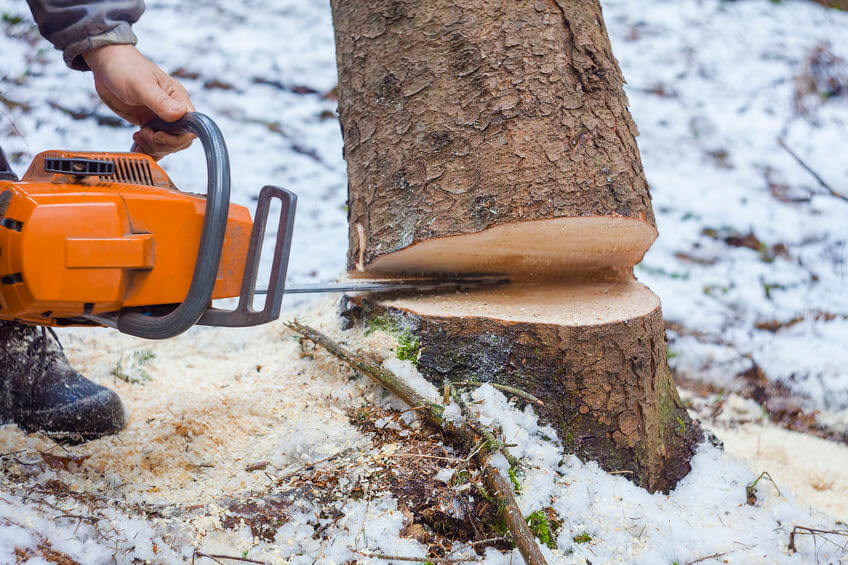Woodland species play a vital role in our environment, offering canopy, fresh air, and habitat for numerous species. However, the rising demand for land and materials has led to significant tree cutting down, often resulting in serious ecological. As we struggle with the ramifications of tree loss, it becomes important to comprehend the importance of tree maintenance as a method of preserving our environment for coming generations.

Tree felling is a grave issue that necessitates considerate thought and accountable stewardship. While clearing trees may be needed for progress or safety, it is crucial to moderate these actions with the importance to care for and maintain our ongoing forests. Focusing on tree care not only improves the health of our urban and rural landscapes but also helps to fighting climate crisis and preserving biodiversity. Through mindful care and understanding, we can forge a sustainable path ahead, making certain that we plant the roots of a healthier future.
The Value of Trees
Woodland serve a vital role in upholding ecosystem stability and fostering life on our planet. They act as organic pollution reducers, removing carbon dioxide and producing oxygen, which is necessary for the well-being of all living beings. Furthermore, spez-ag serve as critical habitats for multitudinous species of animals, granting protection, breeding grounds, and food sources that contribute to biological variety.
In urban environments, urban forests offer multiple benefits to localities. They improve the beauty of residential zones, reinforce local financial growth by enhancing property values, and promote mental well-being by providing tranquil areas for relaxation and relaxation. Moreover, they help to mitigate the increased temperature in urban areas, lower energy costs by offering protection from sun, and enhance air quality by cleansing airborne toxins.
Understanding the crucial nature of tree care is essential in handling our environmental assets. Proper maintenance, such as trimming, hydrating, and disease management, prolongs the lifespan of trees and ensures they continue to grow. This duty is imperative, especially in light of tree felling activities, where thoughtful strategy and thoughtfulness are necessary to balance human requirements with sustainable management.
Effects of Woodland Clearing
Removing forests can substantially disrupt the local ecosystem. Trees provide essential shelter for various species, from birds to arthropods, many of which rely on them for nutrition and shelter. When trees are felled, the immediate effect is the loss of these shelters, which can lead to the fall or relocation of wildlife. This interruption can create an instability in the local biodiversity, affecting not only the cut down species but also those that rely on them, resulting in a ripple effect throughout the ecosystem.
In also to environmental consequences, forest clearing can also lead to land erosion. They play a key role in stabilizing the soil with their root systems. When they are cut down, the soil can become fragile and more prone to erosion, especially during intense rains. This erosion can lead to the loss of important topsoil, which is essential for crop production and can impact surrounding water bodies by amplifying sedimentation and impurities levels. Over time, this deterioration of soil quality can have significant implications for soil productivity and ecosystem vitality.
Furthermore, forest felling has profound implications for global warming. Trees act as CO2 absorbers, absorbing carbon dioxide from the atmosphere and producing oxygen. The clearing of forests contributes to increased greenhouse gas emissions, worsening climate change. Additionally, a reduced number of trees mean less shade and a increased likelihood of urban heat islands, which can negatively affect local weather patterns and living conditions. The act of cutting down trees, therefore, has far-reaching implications that reach well beyond the immediate location, emphasizing the need for responsible tree management and management.
Essential Tips for Tree Maintenance
Taking care of trees calls for a combination of expertise, perseverance, and regular maintenance. One of the crucial practices is proper watering, notably during dry spells. Young trees demand more regular watering to establish robust root systems, while mature trees thrive with deep watering to promote resilience against drought. Mulching at the base of trees can assist retain moisture, suppress weeds, and improve soil quality. It is vital to ensure that mulch is not heaped against the trunk, as this can lead to rot and create a breeding ground for insects.
Pruning is another critical aspect of tree care. It assists to form trees, remove dead or diseased branches, and enhance air circulation inside the canopy. The best time to prune the majority of trees is during their dormant season, typically late winter to early spring. When pruning, use correct techniques to lessen stress on the tree and promote healthy growth. Steer clear of excessive pruning, as this can lead to tree stress and susceptibilities. It is also advantageous to hire a certified arborist for larger trees or when uncertain about how to proceed.
Additionally, monitoring trees for signs of disease or pest infestations is crucial for their long-term health. Early detection can avert severe damage and might save the tree. Using natural pest control methods and encouraging advantageous insects can successfully manage pest populations. Fertilizing trees suitably can also boost their health, but it should be done based on soil tests to guarantee the right nutrients are added. By following these best practices, tree care becomes an rewarding endeavor that contributes to the lasting health and stability of trees in our environment.
